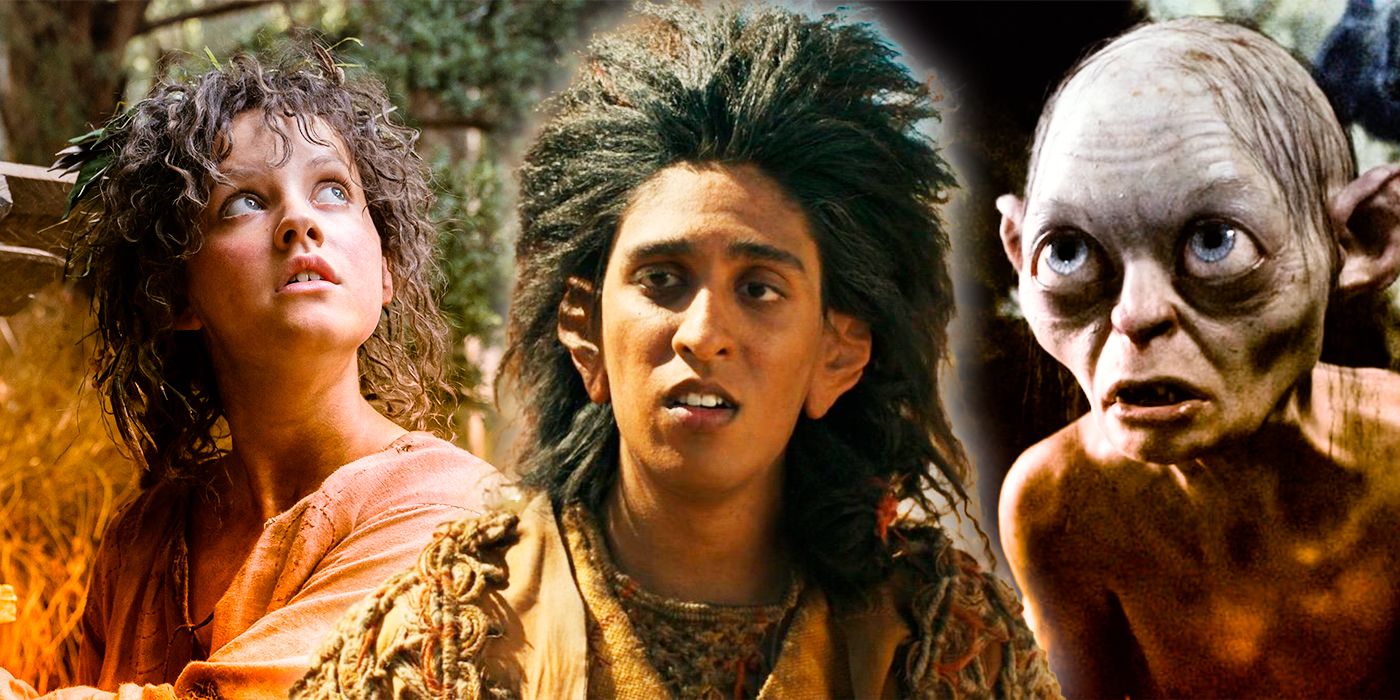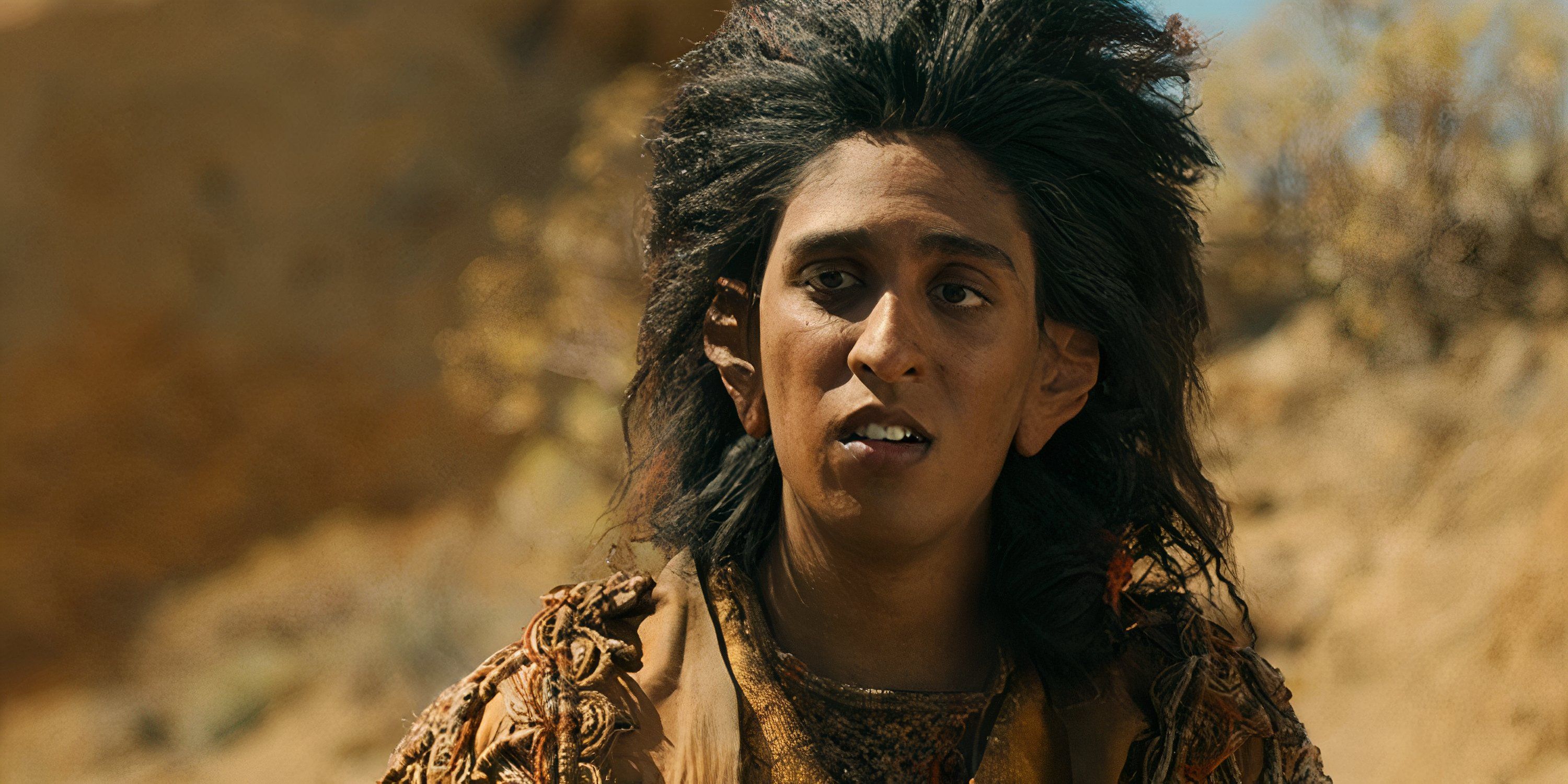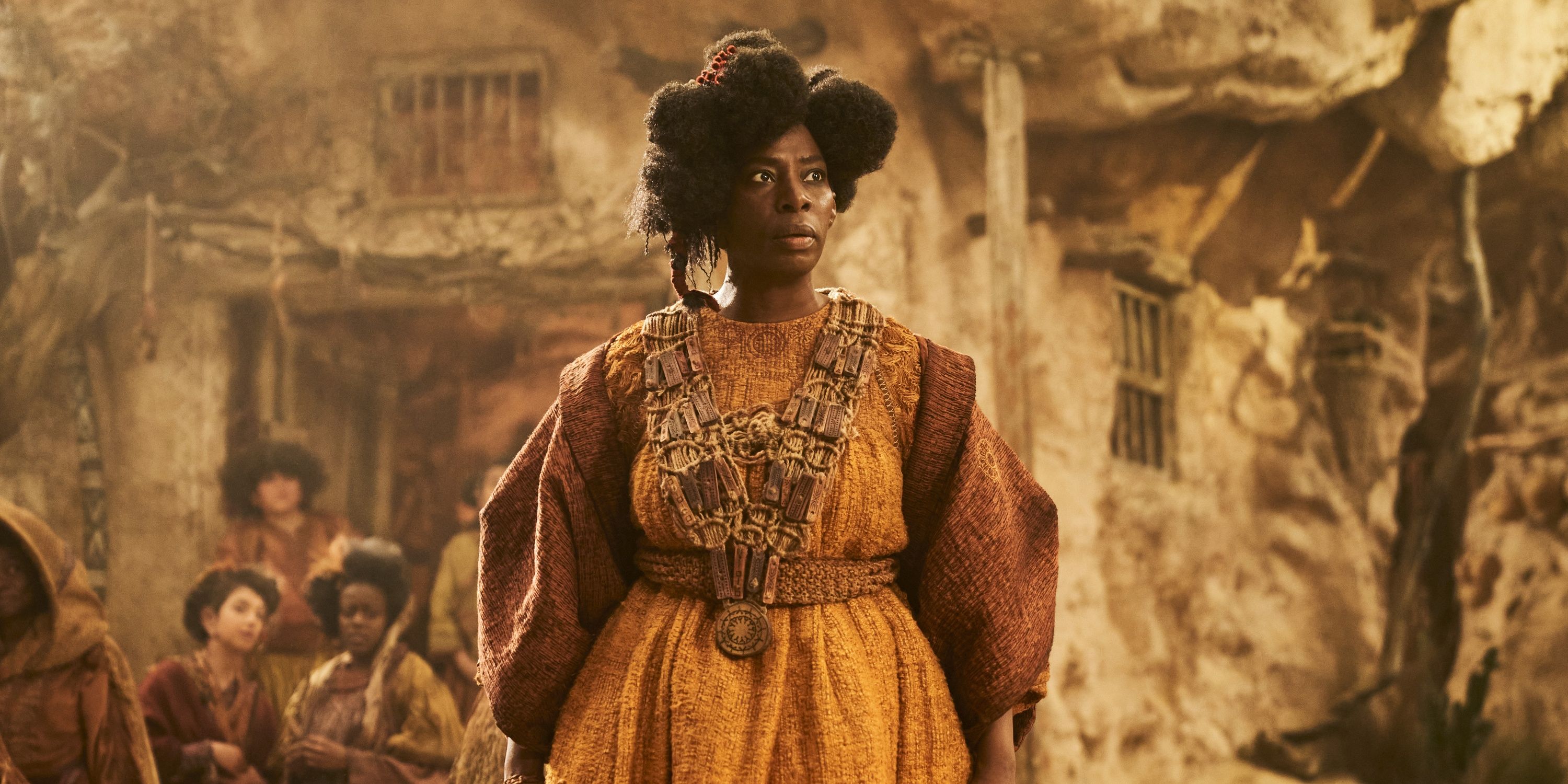
So, it might surprise some Tolkien fans to see the Stoors residing in what can only be described as a barren desert in Rings of Power. While this tribe preferred “flatlands and riversides” in Tolkien’s reckoning, it’s not likely showrunners J.D. Payne and Patrick McKay are simply eschewing the author’s intent for these characters entirely. It’s possible Rings of Power intends to go even further back in time and recall in more detail the history of Hobbits in their “Wandering Days.”
Stoors Were Also Known as “River Folk” and Tended to Live Near Water

Each different type of Hobbit had its own set of characteristics, according to Tolkien. Rings of Power spent all of Season 1 with the breed of Hobbit known as Harfoots, introducing main characters like Poppy, Nori, and Sadoc Burrows. Tolkien describes Harfoots as “browner of skin, smaller, and shorter . . . beardless and bootless.” They’re depicted as nomads in the show who move from place to place and are adept at hiding themselves from view when necessary. This slightly differs from Tolkien describing them as the Hobbits “most inclined to settle in one place,” but it’s not too far off, seeing as all Hobbits at one time were prone to wander. Harfoots are also credited with forming the habit of living in tunnels and holes — which Hobbits would carry with them to The Shire.
Audiences might see more characteristics attributed to Harfoots developing in Rings of Power’s coming seasons. Tolkien mentions that Harfoots had “much to do with Dwarves in ancient times.” So it’ll be interesting to see if Nori and Poppy eventually cross paths with Prince Durin and his kinfolk. Scenes and interactions like this were not something Peter Jackson was able to touch upon in his adaptations of The Lord of the Rings in the early 2000s. Although the Fellowship of the Ring itself had representatives from varying races in Middle-earth, their interactions — by the Third Age (when the War of the Ring takes place) — were not as they had been in ancient times. And the separate peoples of Middle-earth were far less friendly with one another, as evidenced during the Council of Elrond.
Stoors were set apart from Harfoots in a number of ways. In their build, they were more broad and heavier. As the Harfoots were friendlier with the Dwarves, Stoors were “less shy of Men” and were known to have facial hair — most resembling Men in their appearance than other Hobbits. Although Hobbits would later come to be known as largely avoiding water, Stoors were the most comfortable and were even known to swim and fish regularly. Hobbits who still retained these characteristics after the settling of The Shire were considered “Stoorish.” A recognizable Hobbit of Stoorish lineage would be Meriadoc “Merry” Brandybuck.
Yet to be seen in Rings of Power is the final sect of Hobbits: Fallohides. This may be due to the fact that the Fallohides are the least numerous tribe, according to Tolkien. More than any of the other Hobbits, they were most friendly with the Elves and “had more skill in language and song than in handicrafts.” Similar to the Elves, they were lovers of trees and woodlands and had fairer skin and hair. They were natural leaders, and Tolkien said that “the strong Fallohidish strain could still be noted among the greater families, such as the Tooks and the Masters of Buckland.” Peregrin “Pippin” Took — a cousin of Frodo Baggins — would be among notable Fallohide descendants.
Gollum Was a Stoor Hobbit
Unknown to maybe all but the staunchest fan of The Lord of the Rings are Gollum’s specific origins. In Jackson’s film adaptations, there are many clues dropped as to Sméagol’s backstory. Frodo refers to Gollum as “not so very different from a Hobbit” and one of the “river folk.” But the specific label of “Stoor” is never mentioned. In the prologue to the film version of The Return of the King, Jackson depicts how Gollum obtained the One Ring and transformed from the Stoor known as Sméagol into the creature Gollum. A visual cue that is easy to pick up is the fact that Sméagol and his cousin Déagol are fishing on the river when they come upon the ring on the river bottom.
Jackson does not specify when Gollum’s origin story takes place, but it could have happened anywhere between the Second and Third Ages of Middle-earth. In Tolkien’s appendices, he still refers to Stoors, Fallohides, and Harfoots in the early days of the Third Age. Rings of Power takes place in the Second Age of Middle-earth. So it’s likely Payne and McKay are taking the story of the Stoors even further back than what was previously been depicted in mainstream media. Since the Hobbits did not keep a calendar until their settlement of The Shire, their records are less reliable when tracing the history of their people. Although Year 1 by Shire-reckoning would most closely align with the year 1601 in Middle-earth’s Third Age.
It’s entirely possible viewers might see more of Gollum’s backstory on screen now that he’s getting his own film. The Lord of the Rings: The Hunt for Gollum will be directed by Andy Serkis — who played Gollum in Jackson’s movies. It’s projected to be the first story surrounding the character of Gollum, and Variety reported that it will explore untold storylines and has reenlisted the talents of screenwriters Fran Walsh and Philippa Boyens. Boyens stated, “It is an honour and a privilege to travel back to Middle-earth with our good friend and collaborator, Andy Serkis, who has unfinished business with that Stinker — Gollum!” It remains to be seen whether the mythologies presented in this new series of films will line up with the Stoor history being presented in Rings of Power.
Rings of Power Might Cover the History of the Stoors in Detail

Unlike Tolkien’s descriptions of the Stoors in his prologue and appendices, Rings of Power introduces them in an unfamiliar landscape. While they’re mainly known for living near a water source, McKay and Payne seem to be setting their history even further back before they find their dwellings near the Great River Andiun. What Nori and Poppy discover from Nobody and his tribesmen is that the Stoors and Harfoots may be more closely connected than they previously knew. Their leader, Gundabale — a female Stoor — tells the two wayward Harfoots of a desire to find a land where they can settle. During this recounting of history, Nori realizes there may be a connection between the Harfoots’ former leader, Sadoc Burrows, and the Stoors. It looks like Rings of Power will be delving into the times even before what Tolkien outlined in “Concerning Hobbits.”
While exploring more of Tolkien’s Hobbit history, Rings of Power still maintains many elements from the books. The Stoors are known for being a matriarchal society which tracks with the presentation of Gundabale as their chieftain. Still, for a people known for their love of water, seeing them appear in a desert wasteland might be jarring for those familiar with Tolkien lore. Gundabale specifically mentions a Stoor named Rorymas Burrow who set out from Rhûn to find a land more lush and plentiful to settle in. The connection to the Harfoot, Sadoc, clearly being the surname “Burrows.” Just as audiences are seeing the fall of the Dwarven realm of Moria, they might get a glimpse into one of MIddle-earth’s most hidden kingdoms: The Shire — beginning with the settlement of the Stoors.
One of the most intriguing elements of Rings of Power is the potential to see the backstory of so many races of Middle-earth depicted in a way viewers haven’t yet seen. For over twenty years, fans have become so familiar with Jackson’s depiction of the War of the Ring in the Third Age, that each episode of Rings of Power is packed with Easter eggs that tie back to the award-winning trilogy (or simply Tolkien’s work). Placing the Stoors in an unfamiliar element is just another way the showrunners are hinting that there is still more story to tell.

